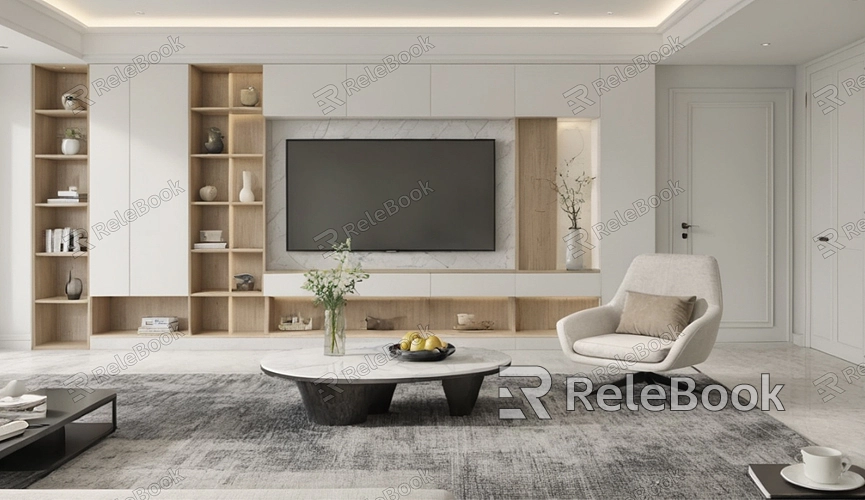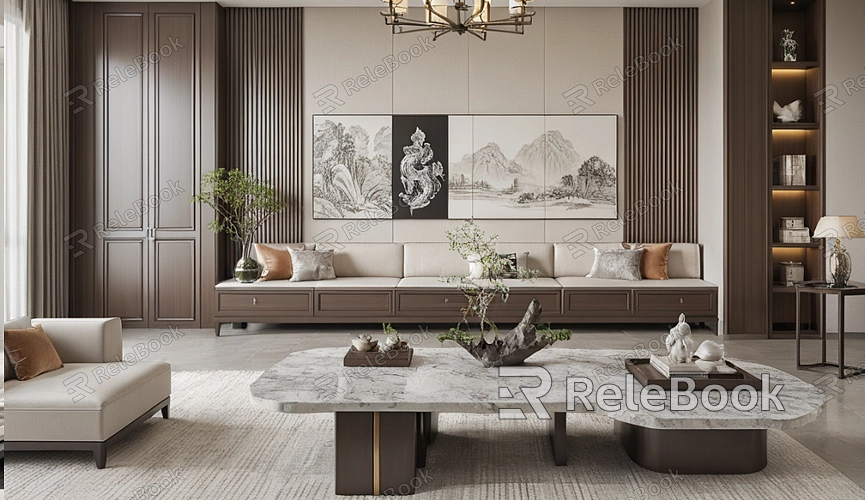How to Create a 3D Model of a Carpet?
Carpets, as an essential component of home environments, come in a variety of colors and textures, making the process of creating 3D models of them a topic of interest for many designers. This article will detail the process of 3D modeling carpets, including preparation work, software selection, modeling steps, and texture handling, helping readers master the efficient creation of realistic 3D carpet models.

Preparation Work
Before starting the modeling process, preparation is crucial. Here are some key steps to consider:
1. Define Modeling Goals
First, clarify your modeling goals. Are you creating a model for a game, animation, or interior design project? Different project requirements will impact the level of detail and accuracy needed in the modeling process. For instance, in games, the carpet model may need to consider polygon count to improve performance, while architectural visualization may require greater detail and realism.
2. Gather Reference Material
Next, gather various reference materials. This can include actual carpet samples, photographs, and design drawings. The richness of your reference materials will directly influence the realism and detail of the final model.
3. Choose the Right Tools
Selecting the appropriate modeling software is key. Commonly used 3D modeling software includes Blender, Maya, 3ds Max, and Cinema 4D. Each software has different features and advantages, and choosing the right tool can enhance both the efficiency and quality of the modeling process.

Choosing Modeling Software
Among the many modeling software options available, how do you select the right tool? Here are the characteristics and applicable scenarios for some common software:
1. Blender
Blender is a powerful, open-source 3D modeling software that is completely free, making it suitable for individuals or small teams with limited budgets. Blender supports the full workflow from modeling to rendering, making it ideal for creating complex carpet models. Its robust node-based material editor also provides flexibility in texture handling.
2. Maya
Maya, developed by Autodesk, is a professional-grade 3D modeling software widely used in animation, game development, and film effects. Maya's modeling tools are exceptionally powerful and suitable for projects requiring high precision. However, its steep learning curve and cost may present challenges for beginners.
3. 3D Max
Also developed by Autodesk, 3ds Max primarily targets architectural visualization and game development, with excellent modeling tools and rendering effects. Its user-friendly interface is particularly suitable for beginners, though it may fall short in complex character modeling.
4. Cinema 4D
Cinema 4D is known for its ease of use and powerful rendering capabilities. It is particularly well-suited for quickly creating high-quality visual effects, making it ideal for projects requiring frequent updates and rendering.
Modeling Steps
Once the preparation work is complete, you can start the 3D modeling process. Here are the typical steps involved:
1. Create Basic Shapes
In your modeling software, start by creating the basic shape of the carpet. Generally, you can use a rectangle or square to represent the carpet's outline. Adjust the dimensions according to the actual size of the carpet to ensure accurate proportions.
2. Add Details
After creating the basic shape, you can begin adding details. This includes the edges, folds, and creases of the carpet. Use extrusion, scaling, and rotation tools to simulate these effects, ensuring the carpet looks more natural.
3. Texture Mapping
Texture mapping is a critical step in carpet modeling. By adding appropriate textures to the model, you can significantly enhance realism. You can use scanned carpet samples or create custom textures using image editing software. Properly map the textures onto the model's surface and adjust them based on lighting and environmental effects to make them more realistic.
4. Lighting Setup
The lighting setup directly impacts the final appearance of the model. Based on the scene's requirements, choose suitable types and positions of light sources to ensure the carpet's material looks realistic under various lighting conditions. You can use a combination of ambient light, point lights, or spotlights.
5. Rendering and Post-Processing
The final step is rendering and post-processing. Render the 3D model into a 2D image and apply any necessary post-processing. This may include adjusting colors and contrast and even adding special effects to enhance the visual outcome.
Texture Handling
Handling the textures of a carpet is crucial for achieving realism in the model. Here are some texture-handling tips:
1. Choose Suitable Textures
Select high-resolution carpet texture images to ensure clarity in detail. When choosing textures, consider the material and style of the carpet, such as wool, nylon, or polypropylene.
2. UV Mapping
Perform UV mapping to unfold the surface of the 3D model into a 2D plane. This makes it easier to apply textures to the model. Ensure there are no overlapping areas in the UV mapping to guarantee an even distribution of the texture on the model.
3. Material Settings
Set the material properties in your modeling software, adjusting parameters such as diffuse reflection, specular reflection, roughness, and transparency to make the carpet look more realistic. For instance, wool carpets have higher diffuse reflection, while plastic carpets tend to be smoother.
4. Detail Enhancement
You can enhance the model's details using techniques like normal maps and displacement maps. Normal maps can simulate subtle surface variations, while displacement maps can alter the surface shape during rendering.
Mastering these techniques will help designers efficiently create realistic carpet 3D models, thereby enhancing the quality and visual impact of their work. We hope you can continuously experiment and innovate in practice to create unique carpet designs. For more high-quality 3D models and textures, feel free to visit Relebook and download what you need.
FAQ
How do I start modeling a carpet in 3D?
Begin by choosing the right modeling software and gathering reference materials for the carpet. After clarifying your modeling goals, start by creating the basic shape and gradually add details.
What are the recommendations for choosing 3D modeling software?
Select software based on your personal needs and skill level. For beginners, Blender is a great option due to its free nature and comprehensive features. For professionals, Maya and 3Ds Max are excellent choices.
How can I ensure the realism of my carpet model?
Enhance realism through high-quality textures and material settings, detailed UV mapping, and appropriate lighting setups.
How do I handle texture mapping for carpets?
Choose high-resolution texture images and perform UV mapping to ensure even distribution of the texture. Use normal and displacement maps to increase detail.

